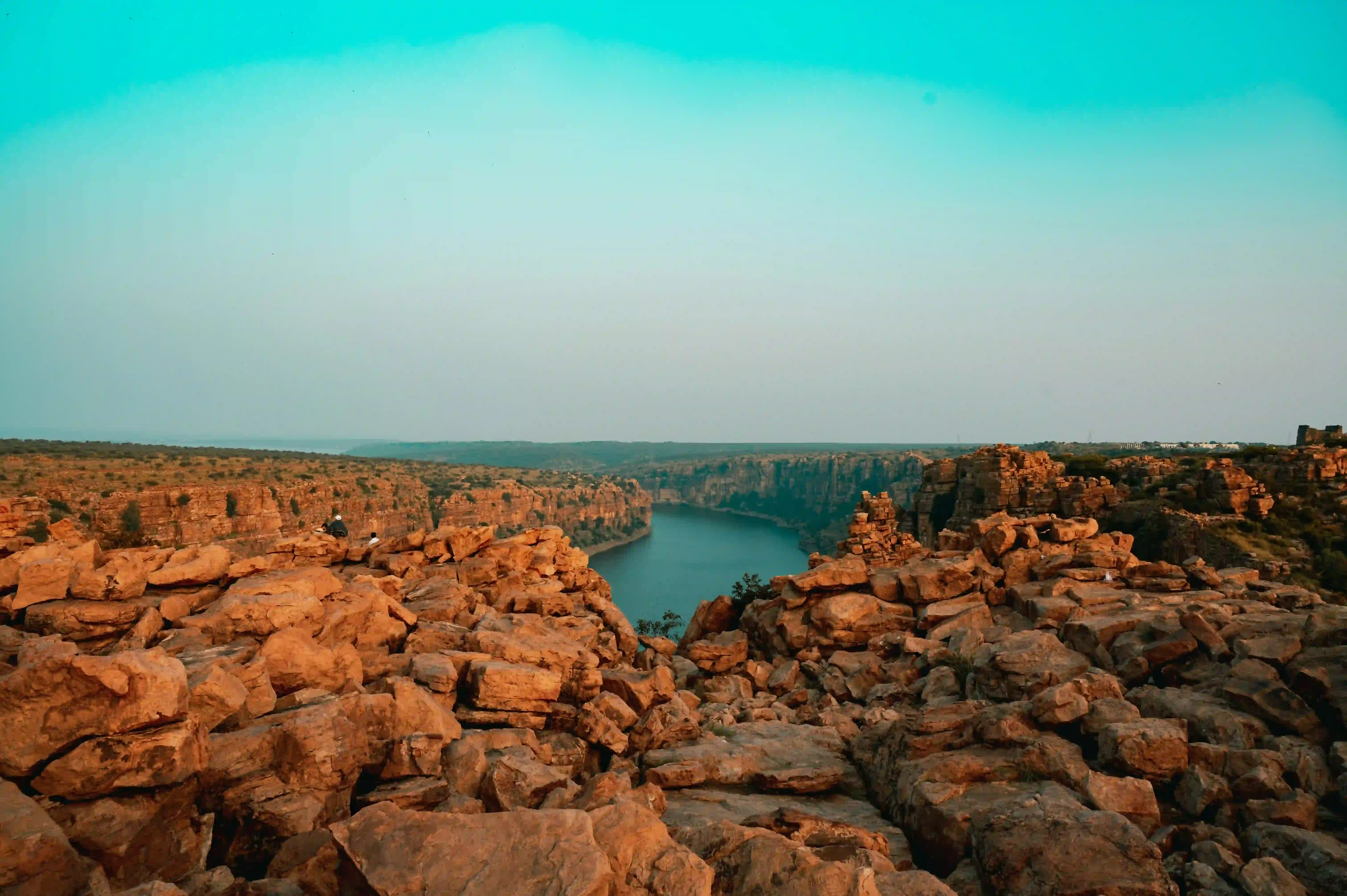Jaisalmer Fort, rising majestically from the golden sands of the Thar Desert, stands as an extraordinary testament to Rajasthan's architectural brilliance and historical legacy. Founded in 1156 CE by Bhati Rajput ruler Rawal Jaisal, this formidable structure, also known as Sonar Quila or the Golden Fort, has served as both a defensive stronghold and a living heritage site for over eight centuries. The choice of location was guided by a local sage who identified the strategic Trikuta Hill as the ideal site for establishing a new capital, superseding the earlier settlement at Lodhruva.
The fort's construction represents a masterpiece of medieval engineering and architectural innovation. Built using the region's distinctive golden-yellow sandstone, its massive walls soar to an impressive height of 250 feet, creating an imposing silhouette visible for miles across the desert landscape. The fortress employs a sophisticated triple-ringed defense system, with the outermost ring featuring a 15-foot tall wall reinforced by 99 bastions. Of these, 92 bastions were either constructed or substantially renovated between 1633 and 1647, significantly enhancing the fort's defensive capabilities. The use of local sandstone not only provided structural strength but also blessed the fort with its characteristic golden hue, which becomes particularly enchanting during sunrise and sunset.
The fort's history is marked by numerous sieges and battles, with one of the most significant occurring in 1299 CE during Alauddin Khalji's campaign. The Delhi Sultanate's siege stretched for several years, pushing the defenders to their absolute limits. In a tragic turn of events, facing inevitable defeat, the Rajput women of the fort performed jauhar (mass self-immolation) while their men charged into a final, fatal battle. This dramatic episode, known as saka, has become deeply embedded in the fort's historical narrative, symbolizing the indomitable spirit of its defenders. Despite such setbacks, the resilient Bhati clan eventually reclaimed control of the fortress.
Within its formidable walls, Jaisalmer Fort houses an intricate maze of architectural and cultural treasures. The Raj Mahal, once home to the Maharawal of Jaisalmer, showcases the opulent lifestyle of Rajput royalty through its elaborate architecture and ornamentation. The fort's religious landscape is enriched by a collection of Jain temples constructed between the 12th and 16th centuries, featuring masterful carvings and hundreds of idols that reflect the region's religious diversity. The Laxminath temple, dedicated to Vishnu and Lakshmi, further exemplifies the harmonious blend of Hindu and Jain architectural traditions that characterizes the fort's sacred spaces.
One of the fort's most distinctive features is its status as a living fortress, home to approximately 4,000 residents, many of whom trace their ancestry to the original inhabitants. This continuous habitation adds a unique vibrancy to the ancient structure, with bustling bazaars, traditional craft workshops, and family-run establishments operating alongside historical monuments. The narrow streets pulse with daily life, creating an immersive experience that bridges past and present, allowing visitors to witness living history in motion.
The fort's strategic position along ancient trade routes significantly influenced its development and prosperity. As a crucial stop on the Silk Road, Jaisalmer facilitated trade between India and Central Asia, generating wealth that is reflected in the ornate havelis scattered throughout the fort and city. These mansions, exemplified by the magnificent Patwon Ki Haveli and the uniquely asymmetrical Nathmal Ki Haveli, showcase exquisite sandstone craftsmanship through their intricate carvings and distinctive jharokhas (overhanging enclosed balconies).
In recent years, Jaisalmer Fort has faced contemporary challenges arising from its dual role as both historical monument and living community. The increasing pressures of tourism and aging infrastructure have raised concerns about preservation, particularly regarding water seepage and structural stability. The fort's inscription as part of UNESCO's Hill Forts of Rajasthan World Heritage Site in 2013 has brought renewed focus on conservation efforts, sparking initiatives to balance preservation with sustainable development. Today, the fort continues to enchant visitors with its panoramic views, rich cultural heritage, and vibrant traditions, particularly during the annual Desert Festival, which celebrates the region's folk arts and customs through music, dance, and traditional performances.









